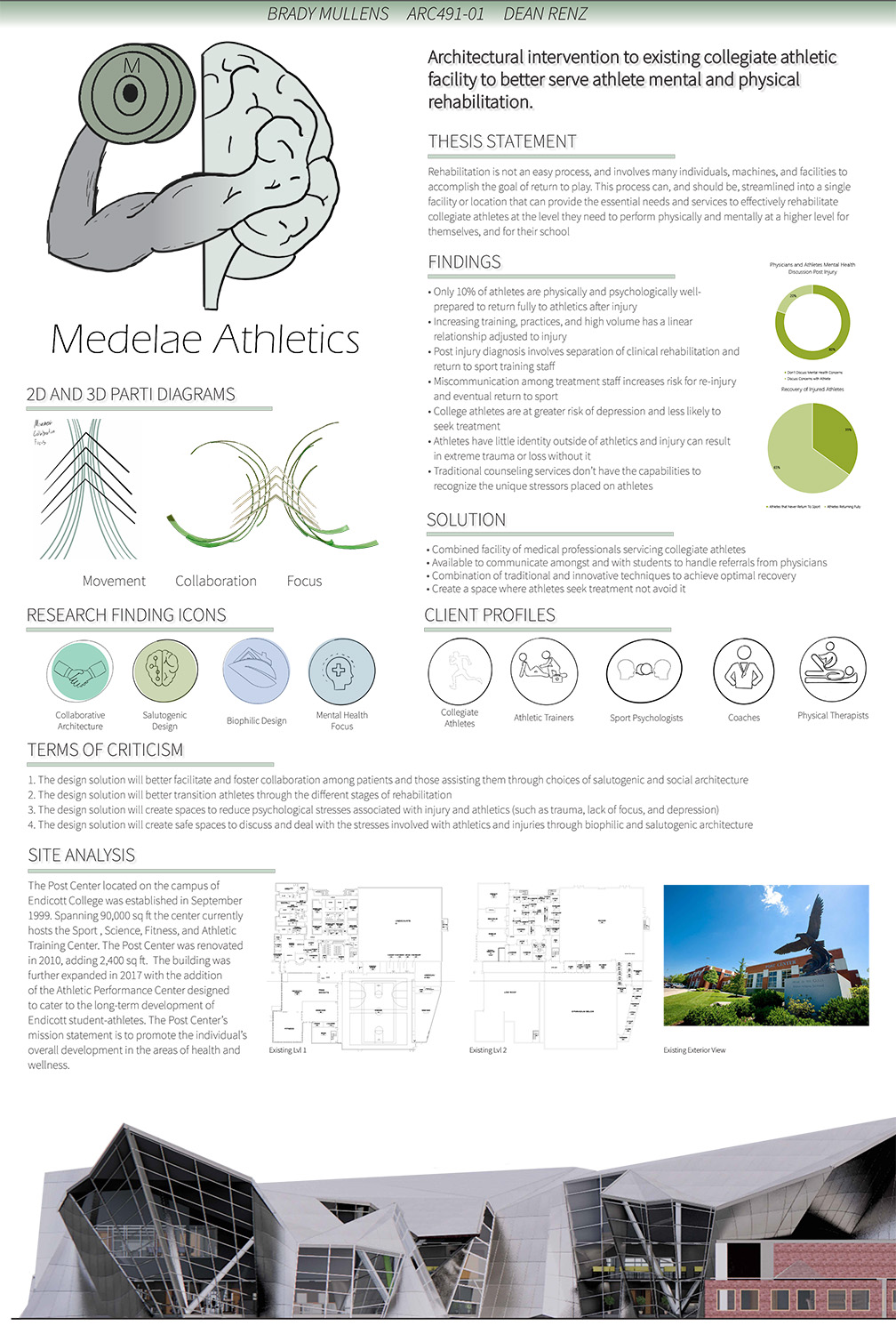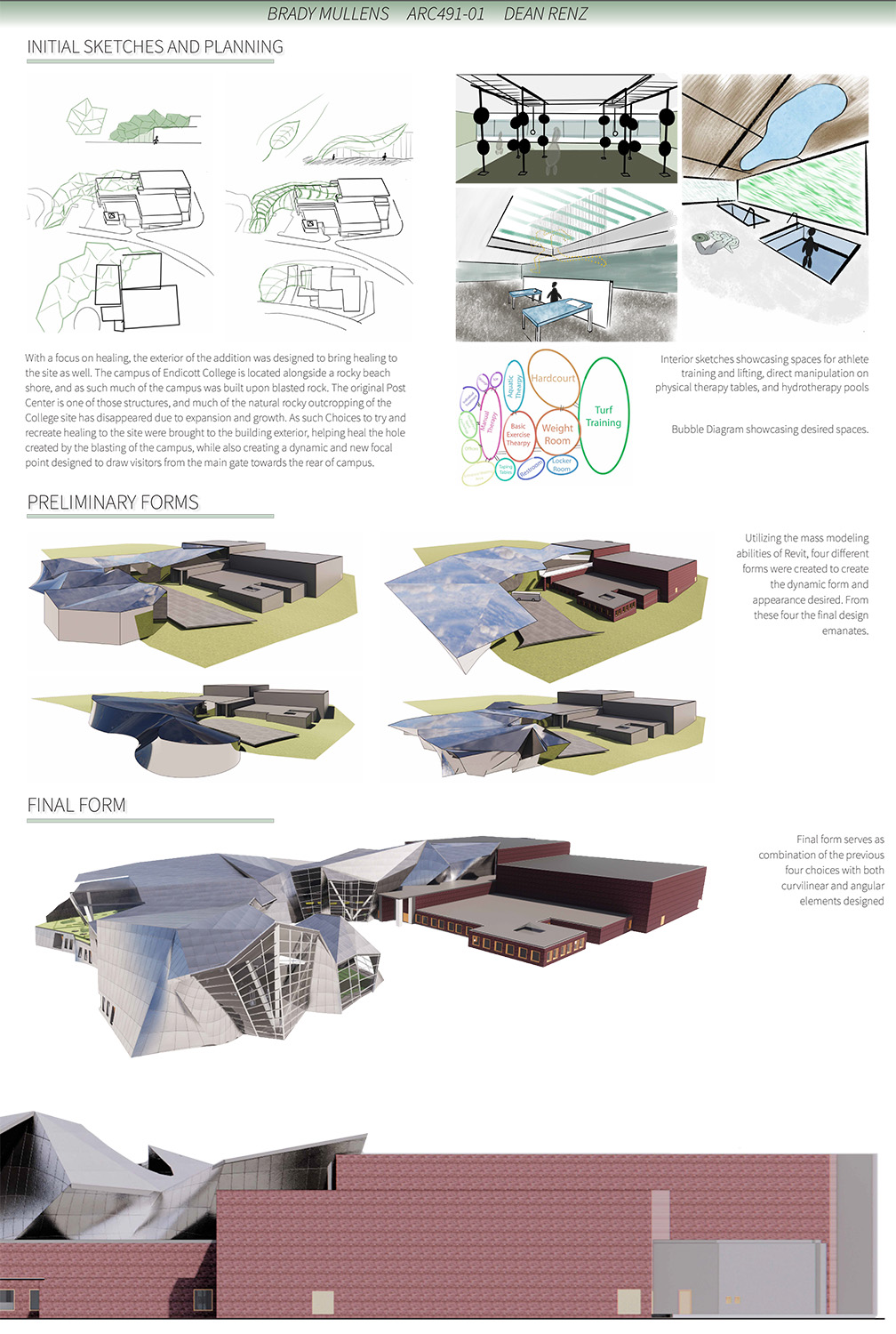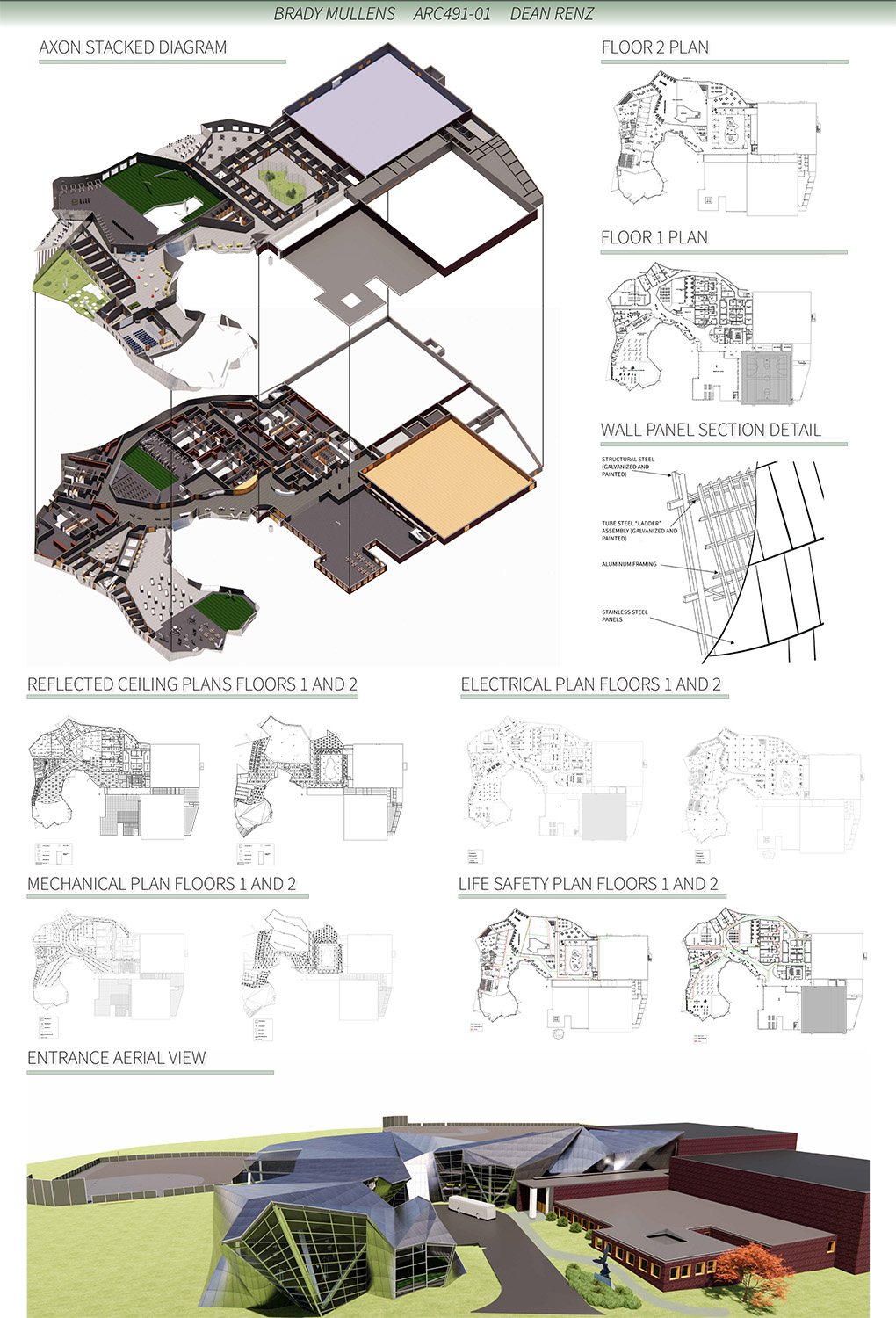Artist Biography
Brady Mullens is graduating from Endicott College in the spring of 2023 with a BFA in Architectural Studies. He is one of the first two graduates from this program, which was started in 2020. Originally studying architecture at California Polytechnic State University in San Luis Obispo, California, Brady transferred to Endicott College in the Spring of 2020. When he transferred, Brady first majored in engineering, but upon learning of the introduction of the architectural studies program, he quickly changed his major back to architecture.
Brady is also a member of the Endicott Men’s Volleyball team and was a starter for the 2022 and 2023 seasons. He is also a member of Endicott Athletics LEAD (Leaders of the Endicott Athletics Department), where he worked with other captains and coaches to better implement leadership standards among their teams and their everyday lives. During his time with the team, Endicott won the New England Collegiate Conference (NECC) twice and made an appearance in the NCAA Division Three Men’s Volleyball Championship.
During his seven semesters at Endicott, Brady has been recognized for his academic achievements with placement within the Endicott Scholars Program, a place on the Dean’s List for every semester attending Endicott, and received NECC Academic All-Conference honors for three consecutive seasons. After graduation, Brady plans to move back to the West Coast to complete his Master of Architecture degree.
Thesis Abstract
Recovery for athletes post-injury is a challenging and imperfect process, and the physical and mental health of athletes is not being successfully addressed. To combat this issue, a holistic all-inclusive facility that combines physical and emotional recovery aspects should be created and implemented. The facility should combine medical professionals trained in musculoskeletal and mental health, and utilize exercise therapy, manual therapy, pain reduction modalities, and mental health resources in a combined manner. In addition, the facility should incorporate elements of both salutogenic and biophilic architectural design to reduce environmental factors that increase stress and the potential for re-injury. The inclusion of these design theories, in conjunction with a combined physical and mental rehabilitation space, will improve the current standards for collegiate athlete recovery and create a better way to rehabilitate athletic recovery.
Rehabilitation is not easy and involves many individuals, machines, and facilities to accomplish the goal of returning to play. This process can and should be, streamlined into a single facility or location that can provide the essential needs and services to effectively rehabilitate collegiate athletes at the level they need to perform physically and mentally at a higher level for themselves and for their school
LinkedIn: https://www.linkedin.com/in/brady-mullens-467707195/



